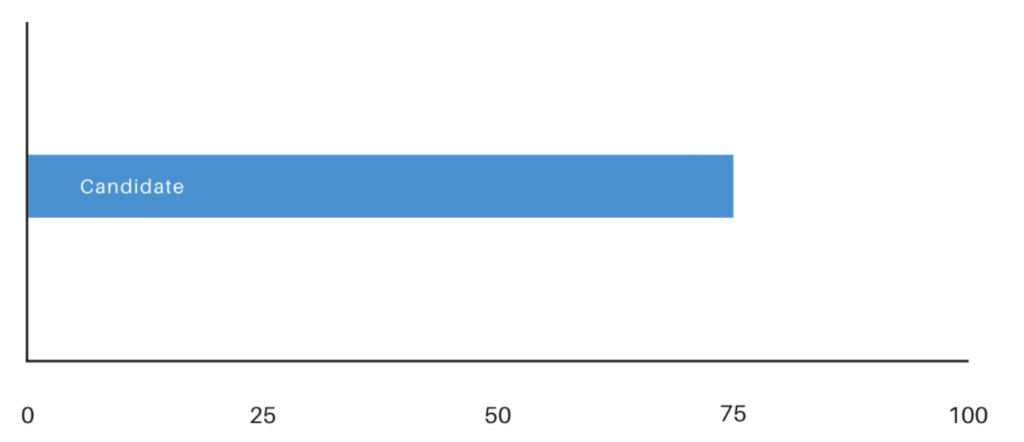How to Use Benchmarking to Save Time & Hire Confidently
Hey there! 👋 Aaron Milam here, Director of Engineering at Woven.
Hundreds of teams trust Woven to assess their software engineering candidates. We test not just candidates’ ability to write code, but also various competencies that are core to the job like communication, testing, algorithms, and more.
Hiring managers receive a detailed analysis of each candidate’s performance and an overall score that makes it easy to compare their skills against one another.
Over time we’ve learned that while candidate assessments are helpful on their own, it’s still tough to know how a candidate would do on a team without understanding how they compare to the team’s existing members.
When a candidate gets a Woven score of 75, what does that really mean?

The importance of benchmarking on engineering teams
Let’s say your team has an average score higher than 85. If a candidate scores a 75, that could mean they’re a relatively low performer. But if this is a candidate for a position with a skillset your team doesn’t yet have, this person could be a force multiplier.
So how do you know where the candidate will land on your specific team?
We recommend having your team take the assessment in a process we call benchmarking. Here’s how to do it.
Tips for benchmarking
- Invite at least 3 team members to complete the assessment: one who will find the work sim to be a stretch, one who is in the “Goldilocks” zone (just right), and one who will knock it out of the park. This helps establish the upper and lower bound of performance on your team for the work simulation
- Give them about a week to complete the assessment
That’s it! We’ll analyze your team’s responses and calibrate scoring for the role based on their performance. From that point on, you can see how the candidate compares to folks at various experience levels on your team.

When you can see how each candidate stacks up against the members of your existing team, it’s easy to tell the difference between a good candidate and a great one. Plus, your team can use their experience with the assessment to follow up with candidates on their responses during subsequent interview steps. This makes in-person interviews even more valuable.
Calibrate your technical assessment today
Woven customers who start with benchmarking consistently see better success. Benchmarked assessment results provide a true signal for the skills their teams need.
Without it, you won’t find out what a score really means until you’ve made the hire and integrated them onto your team. And by then you’ve spent a lot of valuable time determining whether the candidate is a technical fit or a mis-hire.
When creating a candidate assessment, begin by benchmarking with your team. You’ll spend a little time now to save a lot of time during the hiring process.
